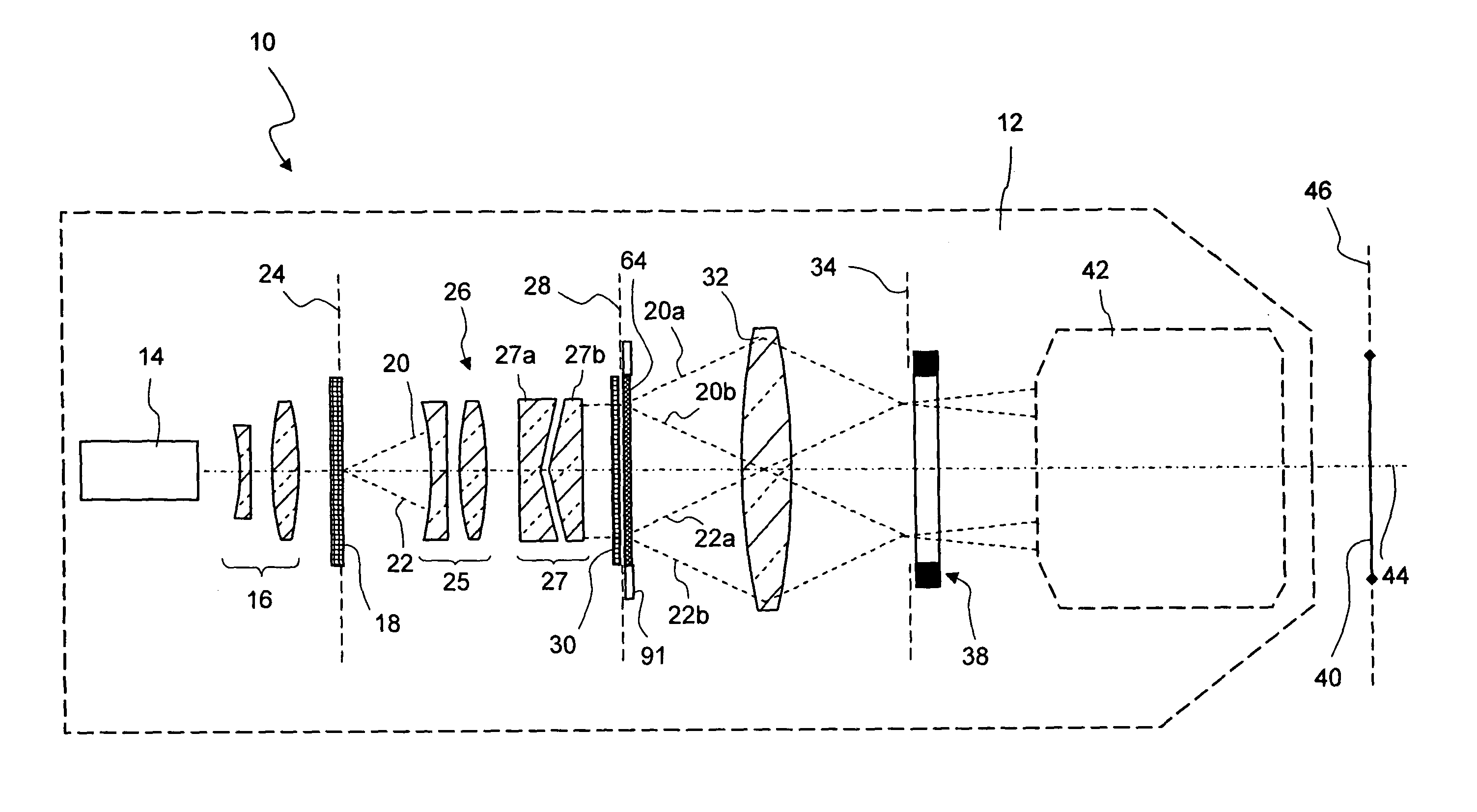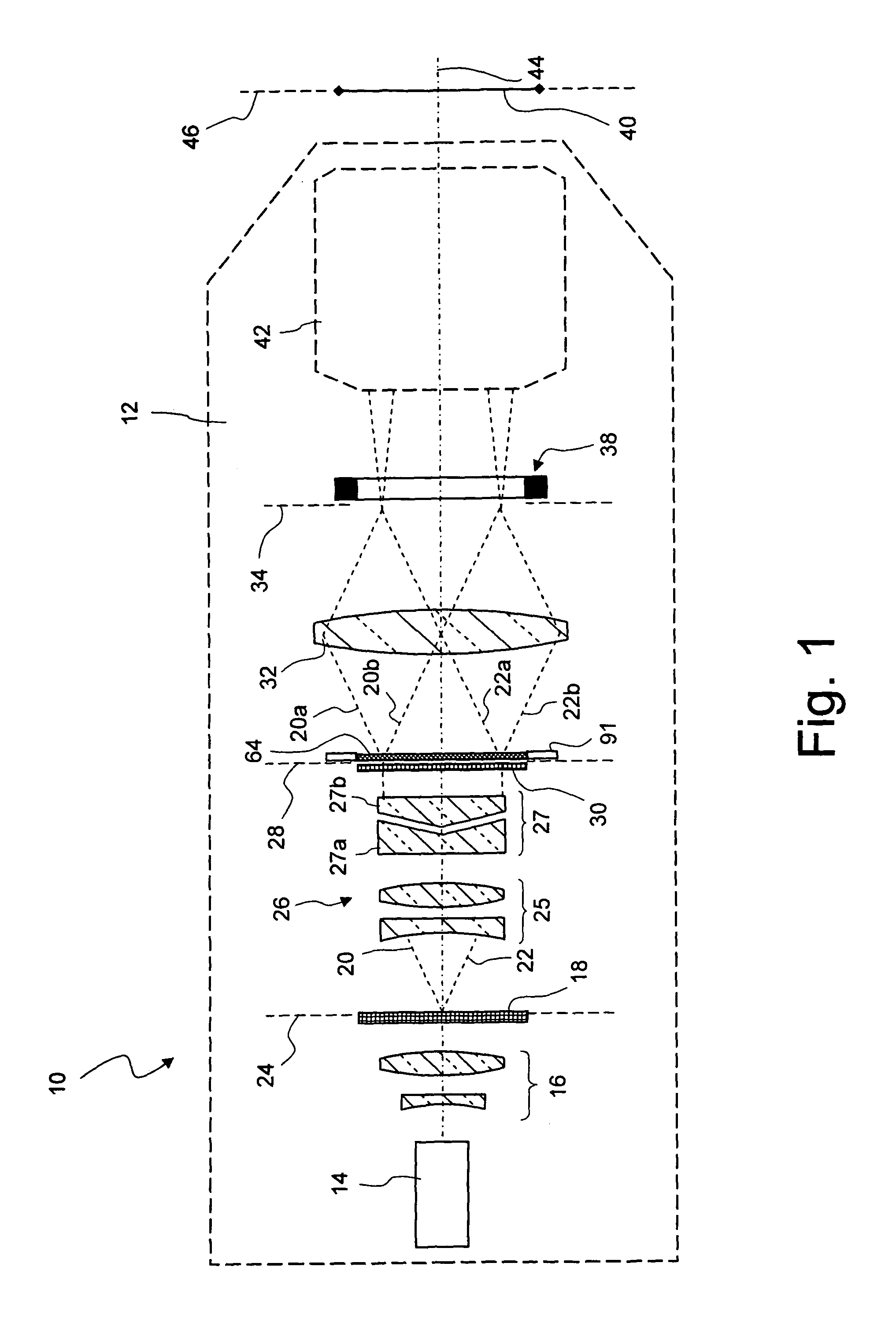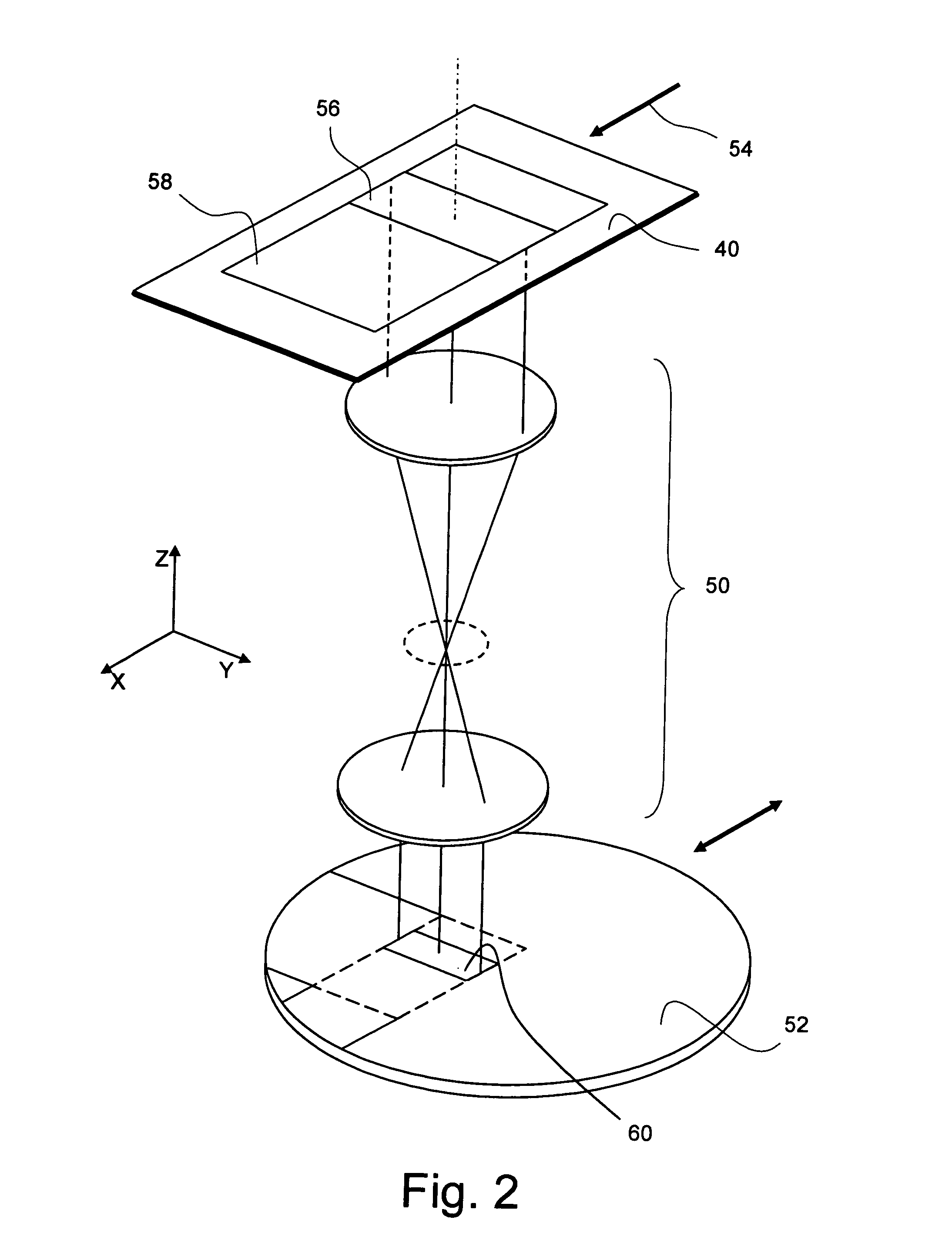Illumination system for a microlithographic projection exposure apparatus
a technology of exposure apparatus and exposure device, which is applied in the direction of microlithography exposure apparatus, printers, instruments, etc., can solve the problems of difficult preservation of the polarization state of illumination light with such light mixing elements, and the inability to change the geometrical optical flux by conventional refractive optical elements such as lenses, and achieve the effect of enhancing the irradiance uniformity in the reticle plane, compact and easy construction
- Summary
- Abstract
- Description
- Claims
- Application Information
AI Technical Summary
Benefits of technology
Problems solved by technology
Method used
Image
Examples
Embodiment Construction
[0070]FIG. 1 shows a meridional section of an illumination system according to the present invention that is to be used in a projection exposure step-and-scan apparatus. For the sake of clarity, the illustration shown in FIG. 1 is considerably simplified and not to scale. The illumination system, which is denoted in its entirety by 10, comprises a light source that is, in the embodiment shown, realized as an excimer laser 14. The excimer laser 14 emits illumination light that has a wavelength in the deep ultraviolet (DUV) spectral range, for example 193 nm. The illumination light emerging from the exit facet of the laser 14 forms a partially coherent light bundle having a small cross section and a low divergence. Thus the geometrical optical flux of the light bundle as emitted by the laser 14 is small.
[0071]The light bundle then enters a beam expansion unit 16 in which the light bundle is expanded. Since the light bundle is diverted at refractive interfaces, the cross section of the...
PUM
| Property | Measurement | Unit |
|---|---|---|
| angles | aaaaa | aaaaa |
| distance | aaaaa | aaaaa |
| distance | aaaaa | aaaaa |
Abstract
Description
Claims
Application Information
 Login to View More
Login to View More - R&D
- Intellectual Property
- Life Sciences
- Materials
- Tech Scout
- Unparalleled Data Quality
- Higher Quality Content
- 60% Fewer Hallucinations
Browse by: Latest US Patents, China's latest patents, Technical Efficacy Thesaurus, Application Domain, Technology Topic, Popular Technical Reports.
© 2025 PatSnap. All rights reserved.Legal|Privacy policy|Modern Slavery Act Transparency Statement|Sitemap|About US| Contact US: help@patsnap.com



